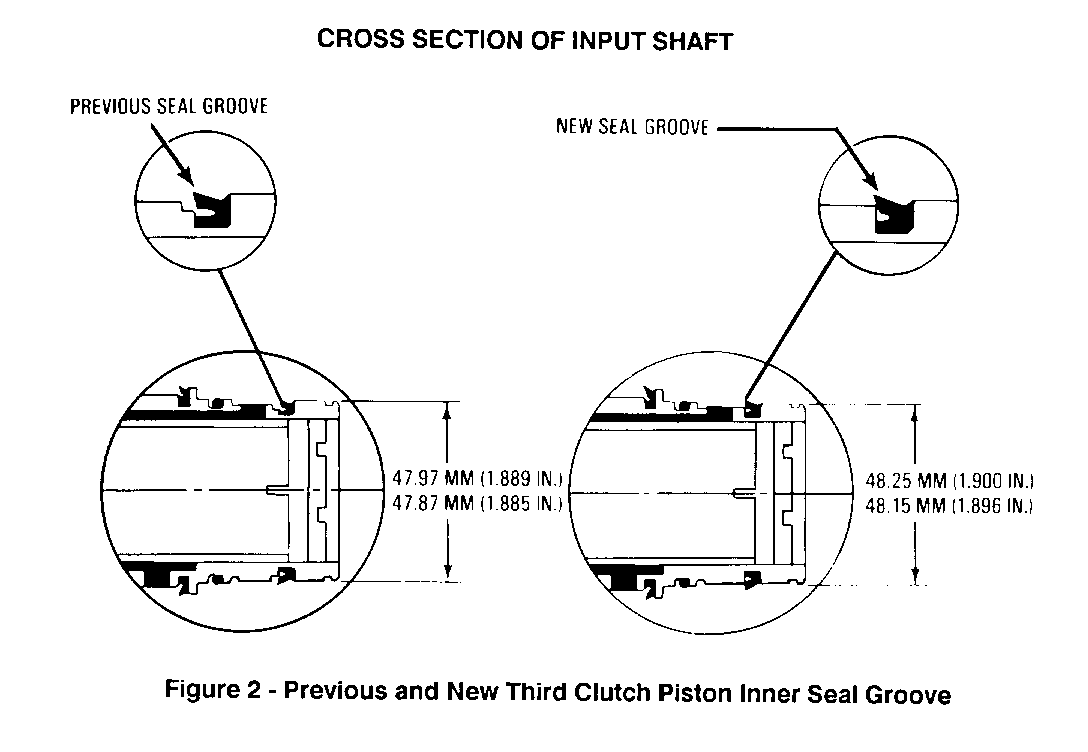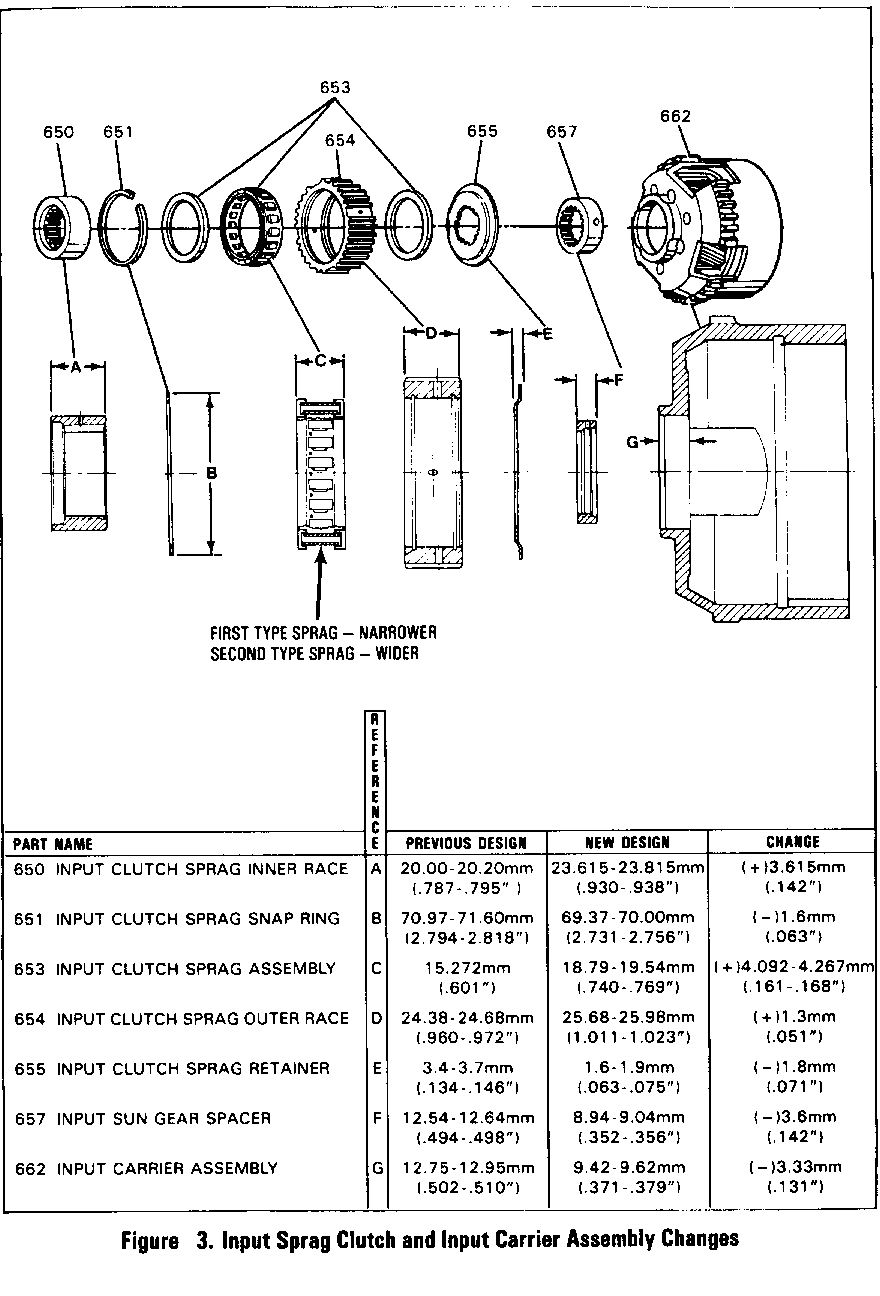THM 440-T4/HYDRA-MATIC 4T60 REPAIR GUIDELINES

Models Affected: 1984-90 ALL MODELS WITH 4T60 (440-T4) TRANSMISSIONS
This article is intended to give you some guidelines for inspection and repair of THM 440-T4/Hydra-matic 4T60 transaxles. We will look at areas of concern and related Dealer Technical Bulletins. We will discuss those bulletins and help you decide when the repairs in those bulletins should be used. Generally a bulletin repair would be used when the bulletin refers to a specific complaint the owner may have, or if you find specific damage or wear noted in a bulletin. Don't assume that any 'update' talked about in a bulletin should be done to every transaxle you repair unless it specifically indicates such.
The most important step in any repair is verifying the owner's concern. If at all possible, the car should be test driven and the exact condition experienced. This will be valuable information when you are looking at those parts spread out on the bench and determining the cause of the condition.
Let's assume you have verified the condition, determined during the test drive what the cause may be and that you will need to remove the transaxle from the vehicle. As the transaxle is disassembled, there will be some things you will want to inspect while determining what repairs the transaxle might need that may not be listed in the Chassis Service Manual.
BOTTOM PAN, FILTER, ACCUMULATORS, GOVERNOR CIRCUIT, 1-2 SERVO PIPES
Look inside the bottom pan. You may have already had this pan off when the transaxle was in the car, but look for signs of more than a normal amount of material in the bottom of the pan or on the magnet. Pay attention to the type of material it might be. Is it clutch fiber material, steel, brass or aluminum particles? This information will help determine where worn or damaged parts may be as you go through the transaxle.
Sometimes it may be a good idea to open up the filter and look inside. If you have a shift complaint which could be due to sticking valves or if you suspect a torque converter problem, look for clutch plate fiber material inside the filter. If you see this but find no damaged clutch plates or bands anywhere in the transaxle, the fiber material probably came from the torque converter clutch damper plate. The head of a rivet in the damper plate may have broken off and sheared off the clutch plate material. You wouldn't see this by looking into the torque converter. Metal particles originating from a torque converter can also be found in the filter. The filter can give you some good clues.
Late shift complaints could be caused by foreign material stuck in the governor check ball seats limiting governor pressure. Check the governor check balls for leaking seats by positioning the weights so the balls are seated and filling the shaft with solvent. The solvent should not leak from the check balls. Check all four accumulator piston seals for being cut, nicked, rolled or split. Also check the outside edge which seals against the accumulator bore. If it appears shiny, compare the thickness of the old seal with a new seal. If the seal has lost a large amount of material, the bore of the accumulator may be too smooth to hold oil. This will cause the seal to run dry and wear down. Replace the seal and to prevent this from wearing the new seal, scuff up the bore of the accumulator in a horizontal cross-hatch pattern with a fine "abrasive" screen (such as Scotch Brite or an equivalent) and ATF.
PUMP AND VALVE BODY
Take a look at the pump drive shaft bearing surface. If there is any scoring, spalling, or excessive wear on the bearing surface, the pump shaft and bearing should be replaced.
Shift complaints can be caused by a valve sticking in its bore. Do not use sand paper or emery cloth to clean a sticking valve. This can result in the sharp edges being rounded off of the valves. Those sharp edges need to be there to keep the valve and bore clean by scraping out debris.
Clean a sticky valve and its bore by coating the valve with an ultra fine lapping compound or a polishing compound (900 grit or finer) and working the valve in and out of the bore. Be very careful to clean all of the compound out of the bore and off the valve afterwards to avoid sticking or wear in the bore. When clean, the valve should move through the bore by its own weight with out any springs in place.
DRIVEN SPROCKET SUPPORT - 2ND CLUTCH DRUM
Inspect the oil seal rings for the 2nd clutch drum. If this is a 1986 or earlier transaxle equipped with cast iron seal rings, the outside surface of the rings will usually be shiny indicating wear. Look at the inside diameter of the 2nd clutch drum (Figure 1). If there are no grooves worn into the drum where the rings ride, then the drum can be reused and new cast iron seal rings installed. If there are grooves worn into the drum, then refer to Dealer Technical Bulletin 86-7-50. That bulletin will give you information on a new driven sprocket support and Vespel oil seals which should be used along with a new 2nd clutch drum.
INPUT SHAFT AND HOUSING - THIRD CLUTCH INNER PISTON SEAL
A long or delayed 2-3 shift or a burned 3rd clutch could be caused by a damaged or rolled 3rd clutch inner piston seal. Dealer Technical Bulletin 87-7-32 discusses a new wider seal that is now found in seal and gasket kits as well as overhaul kits. The bulletin also describes a kit which includes the new seal, an input shaft and housing assembly, and a 3rd roller clutch. The new seal can be used in the original type input shaft and housing with the stepped groove (Figure 2), if the shaft and housing are not damaged. If shaft and housing or the 3rd roller clutch is damaged, then the kit should be used.
INPUT SPRAG
A condition of intermittent no drive and reverse may be caused by the input sprag assembly. Dealer Technical Bulletin 86-7-53 discusses a first and second type input sprag and their differences. The most significant difference is the width. The second type sprag is wider than the first. If you are working on a 440-T4 built prior to April 1, 1986 which has a first type sprag and you have the transaxle apart as far as the input sprag, you should replace it with a new first type sprag. The first type sprag you get from G.M.S.P.O. has durability improvements. You do not need to update to a second type sprag unless the input carrier is damaged. If it is, the only new carrier available is the one used with the second type sprag. In this case the update kit listed in 86-7-53 would be the best repair.
TRANSAXLE COOLER FLUSHING
It is very important to flush the cooler any time a transaxle is removed for repair. This would include a torque converter replacement. It is also important to flush the cooler if the pump or valve body is removed with the transaxle in the car. Use the Kent-Moore cooler flushing tool J35944 and Biodegradable Flushing Solution. And don't forget to do a cooler flow test as it is described in Dealer Technical Bulletin 87-7-1. Without the proper volume of fluid (2 quarts in 30 seconds) flowing through the cooler and lines, there will not be enough cooling and lubrication capacity for the transaxle. This of course could lead to another breakdown, unnecessary work for you, and most importantly an unsatisfied customer.
Remember to use the 440-T4/Hydra-Matic 4T60 bulletins with the following rule in mind. Unless you have the condition or damage noted in a bulletin, you do not usually need to do the repairs or install the parts listed in that bulletin.



General Motors bulletins are intended for use by professional technicians, not a "do-it-yourselfer". They are written to inform those technicians of conditions that may occur on some vehicles, or to provide information that could assist in the proper service of a vehicle. Properly trained technicians have the equipment, tools, safety instructions and know-how to do a job properly and safely. If a condition is described, do not assume that the bulletin applies to your vehicle, or that your vehicle will have that condition. See a General Motors dealer servicing your brand of General Motors vehicle for information on whether your vehicle may benefit from the information.
